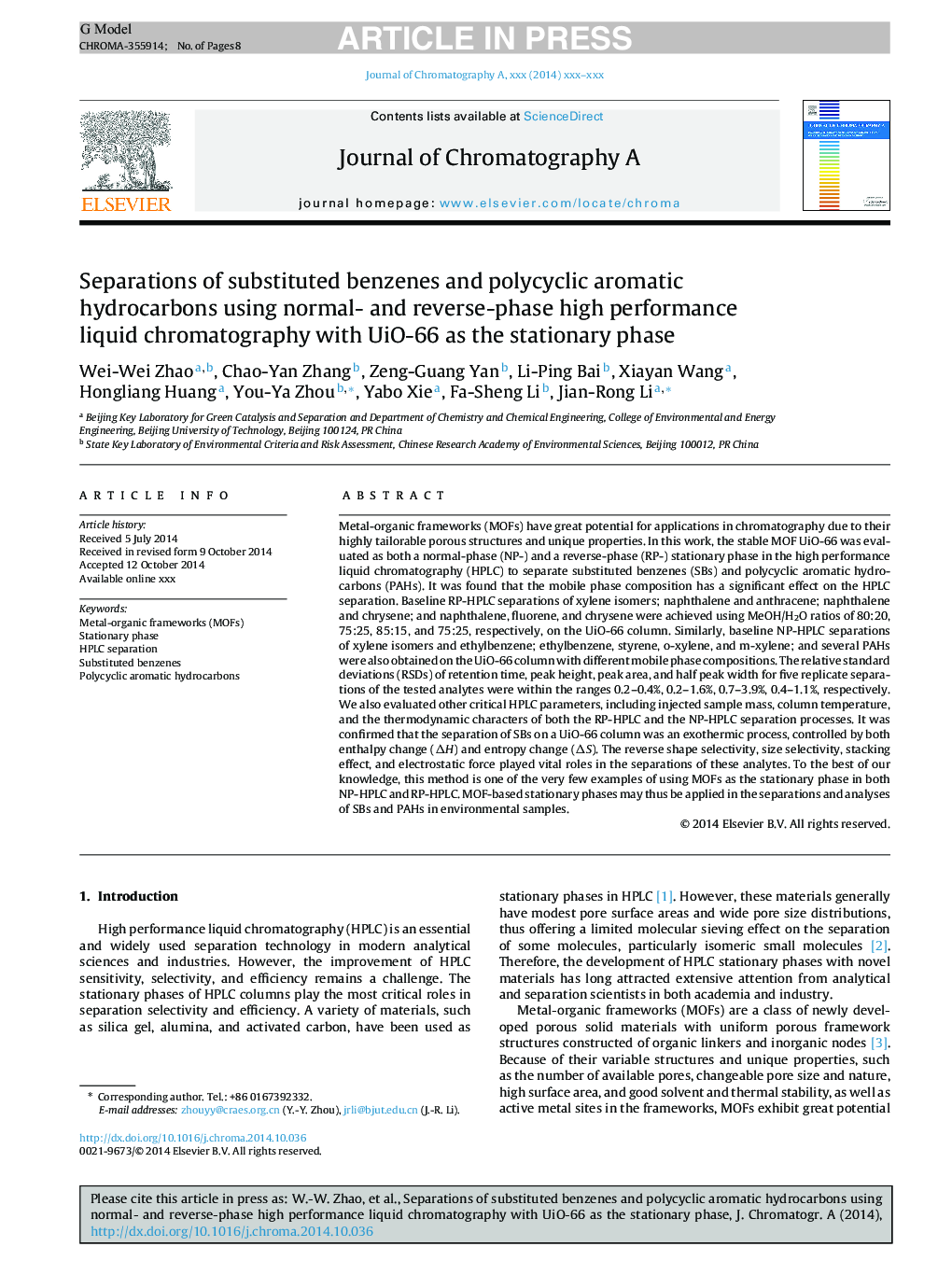| کد مقاله | کد نشریه | سال انتشار | مقاله انگلیسی | نسخه تمام متن |
|---|---|---|---|---|
| 7612390 | 1493556 | 2014 | 8 صفحه PDF | دانلود رایگان |
عنوان انگلیسی مقاله ISI
Separations of substituted benzenes and polycyclic aromatic hydrocarbons using normal- and reverse-phase high performance liquid chromatography with UiO-66 as the stationary phase
دانلود مقاله + سفارش ترجمه
دانلود مقاله ISI انگلیسی
رایگان برای ایرانیان
کلمات کلیدی
موضوعات مرتبط
مهندسی و علوم پایه
شیمی
شیمی آنالیزی یا شیمی تجزیه
پیش نمایش صفحه اول مقاله

چکیده انگلیسی
Metal-organic frameworks (MOFs) have great potential for applications in chromatography due to their highly tailorable porous structures and unique properties. In this work, the stable MOF UiO-66 was evaluated as both a normal-phase (NP-) and a reverse-phase (RP-) stationary phase in the high performance liquid chromatography (HPLC) to separate substituted benzenes (SBs) and polycyclic aromatic hydrocarbons (PAHs). It was found that the mobile phase composition has a significant effect on the HPLC separation. Baseline RP-HPLC separations of xylene isomers; naphthalene and anthracene; naphthalene and chrysene; and naphthalene, fluorene, and chrysene were achieved using MeOH/H2O ratios of 80:20, 75:25, 85:15, and 75:25, respectively, on the UiO-66 column. Similarly, baseline NP-HPLC separations of xylene isomers and ethylbenzene; ethylbenzene, styrene, o-xylene, and m-xylene; and several PAHs were also obtained on the UiO-66 column with different mobile phase compositions. The relative standard deviations (RSDs) of retention time, peak height, peak area, and half peak width for five replicate separations of the tested analytes were within the ranges 0.2-0.4%, 0.2-1.6%, 0.7-3.9%, 0.4-1.1%, respectively. We also evaluated other critical HPLC parameters, including injected sample mass, column temperature, and the thermodynamic characters of both the RP-HPLC and the NP-HPLC separation processes. It was confirmed that the separation of SBs on a UiO-66 column was an exothermic process, controlled by both enthalpy change (ÎH) and entropy change (ÎS). The reverse shape selectivity, size selectivity, stacking effect, and electrostatic force played vital roles in the separations of these analytes. To the best of our knowledge, this method is one of the very few examples of using MOFs as the stationary phase in both NP-HPLC and RP-HPLC. MOF-based stationary phases may thus be applied in the separations and analyses of SBs and PAHs in environmental samples.
ناشر
Database: Elsevier - ScienceDirect (ساینس دایرکت)
Journal: Journal of Chromatography A - Volume 1370, 28 November 2014, Pages 121-128
Journal: Journal of Chromatography A - Volume 1370, 28 November 2014, Pages 121-128
نویسندگان
Wei-Wei Zhao, Chao-Yan Zhang, Zeng-Guang Yan, Li-Ping Bai, Xiayan Wang, Hongliang Huang, You-Ya Zhou, Yabo Xie, Fa-Sheng Li, Jian-Rong Li,